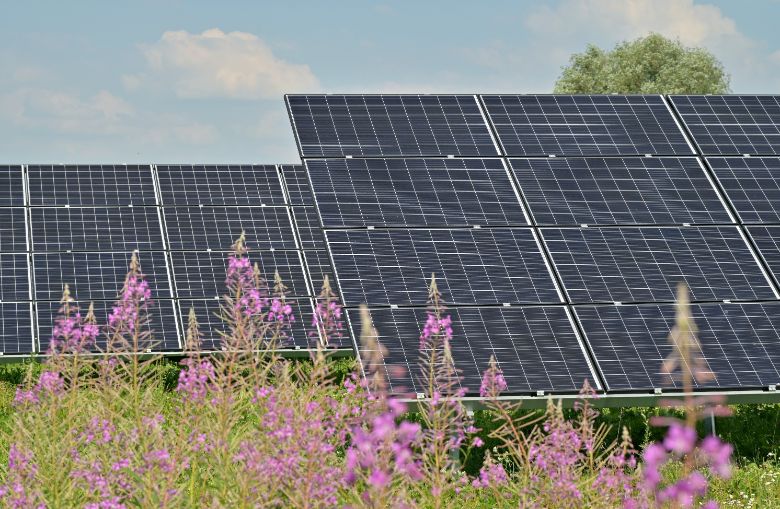Free, reliable, and environmentally friendly, the sun has been generating energy for billions of years. Solar energy is a rapidly expanding component of our power generation mix and will be crucial to energy production in the future. So yes, solar energy is a form of renewable energy. An environmentally friendly way to generate energy is by using solar panels to capture the sun’s energy. Please continue reading for more details.
What Is Renewable Energy?
Any energy source that naturally replenishes on a human timescale is considered a renewable energy source. On the other hand, non-renewable energy is derived from energy sources that aren’t regarded as renewable (like coal and oil) because they form over thousands or even millions of years.
As a result, they cannot be replenished at the rate at which humans are currently using them. Renewable energy is more sustainable because it comes from non-depletable sources, unlike fossil fuels.
Characteristics Of Renewable Energy
- Generally clean, non-polluting
- Many sources do not emit any greenhouse gases or toxic waste
- long-term dependable
- Cost-effective
- Efficient
Sources Of Renewable Energy
- Wind
- Biomass
- Geothermal
- Hydro
- Solar
In other words, solar energy is a renewable energy source. Solar energy will be available as long as the sun is shining.
Benefits Of Renewable Energy
Renewable energy sources are more sustainable because there is an endless supply of them. Coal and oil are examples of non-renewable energy sources that we are using more quickly than we can replenish, so they will eventually run out in the near future.
We become more self-sufficient and ensure that we can support ourselves in the future by switching to renewable energy.
The environment benefits greatly from the use of renewable energy sources. Global warming is a result of greenhouse gases produced by non-renewable energy sources like fossil fuels.
Additionally, it worsens air pollution, which can cause conditions like asthma, bronchitis, emphysema, and perhaps even cancer. We increase the lifespan of the human race and the planet by switching to cleaner, greener energy sources.
Additionally, using renewable energy is more cost-effective. Solar panels are now the cheapest form of energy in Australia, where the cost of renewable energy is falling quickly.
The energy you produce is all free once your solar panels are installed, so you won’t have to worry about paying for electricity during the day.
After installing a residential solar system, the average family saves over $2,160 annually, which is the same as paying off a mortgage for a month! A battery can also be used to store excess energy from the day so that it can be used at night, or even sold to nearby energy suppliers.

Through the Small-scale Technology Certificates program or STC, you can also receive financial government incentives if you choose solar panels as your renewable energy source.
Is Solar Energy Renewable?
Solar energy is one of the cleanest and most abundant renewable resources, meaning it won’t ever run out or be in short supply. The amount of sunlight that enters the earth’s atmosphere in a single hour is equivalent to one year’s worth of hypothetical electricity for every person on the planet.
Simply put, we need to construct enough solar panels to harness even a small amount of this energy.
Any energy source that replenishes naturally over a human timeframe is a renewable energy source. Because they form hundreds of thousands of years and cannot be replenished at the rate at which humans use them today, non-renewable energy sources like coal and oil are not considered renewable.
Fossil fuels are made from the earth’s ancient carbon-rich remains, whereas solar energy is transmitted to us by the sun’s rays. Therefore, solar energy will be present as long as the sun is shining. Solar power is a remarkably reliable energy source that will always be accessible to us.
Read More:
In What Ways Is Solar Power Renewable?
Renewable energy comes from natural resources that replenish or “renew” themselves on their own. We can produce electricity using renewable resources like wind, sunlight, and water.
Non-renewable energy is produced using resources that are finite and cannot be replenished. Oil is an example of a non-renewable resource because it is scarce and cannot be replenished naturally once it runs out.
A green energy source is also solar energy. Though they are frequently used synonymously, renewable energy and green energy actually refer to two distinct concepts. Green energy has very little of an effect on the global carbon footprint, while renewable energy can regenerate itself.
While every form of green energy is renewable, not all forms of it are environmentally friendly. Solar energy is green because it does not release greenhouse gases like carbon dioxide, making it renewable because the sun will always produce energy.
How Solar Energy Helps The Environment?
Solar systems function by utilizing sunlight to generate thermal and electrical energy for residential, commercial, and industrial locations. Depending on how much sunlight a solar system receives each day, it will produce a certain amount of energy.
Because they are environmentally friendly, many consumers decide to purchase residential solar panels. Carbon dioxide and other dangerous greenhouse gases are released into the atmosphere when non-renewable fossil fuels like coal, oil, and gas are burned to produce electricity.
The National Renewable Energy Laboratory (NREL) estimates that over the course of its lifetime, a solar system only emits about 40g of carbon dioxide equivalent per kilowatt-hour (kWh). A coal power plant, by contrast, produces more than 1,000g of carbon equivalent per kWh over its entire lifetime.
Utilizing solar energy for home energy reduces the environmental impact of your home by using a power source with a significantly lower carbon footprint.
By reducing the amount of carbon dioxide in the atmosphere, switching to renewable and environmentally friendly energy sources helps to mitigate the effects of global warming.
